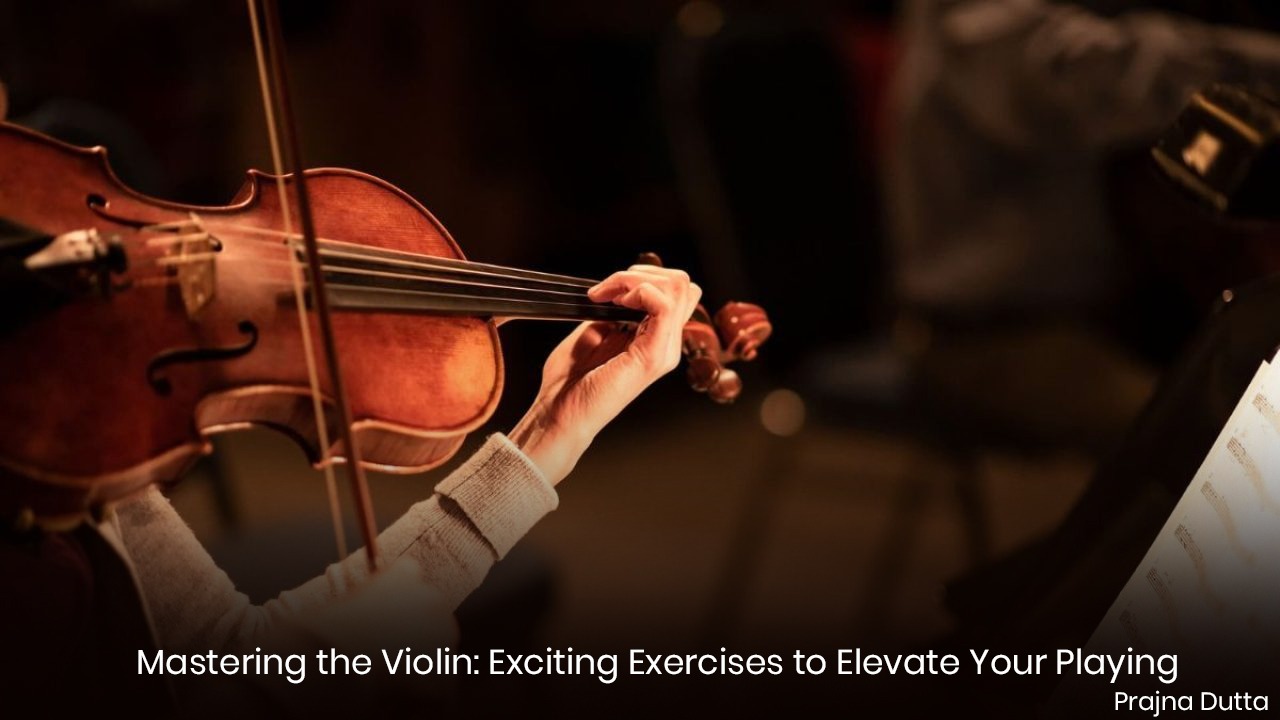Are you a violinist looking to enhance your skills, technique, and musical expression on this beautiful instrument? Incorporating targeted exercises into your practice routine can help you improve your playing and take your violin performance to the next level. In this blog post, we'll explore some exciting exercises that can help you elevate your violin playing and grow as a musician.
1. *Bow Control Exercises*: Bow control is essential for producing a beautiful tone and expressing emotions through your playing. Practice exercises that focus on bowing technique, such as bow distribution, bow speed variation, and bow pressure control. These exercises can help you achieve a more nuanced and dynamic sound.
Example: Practice bowing long tones on each string, focusing on maintaining a consistent tone quality from the frog to the tip of the bow.
2. *Scales and Arpeggios*: Scales and arpeggios are fundamental exercises that can help you improve your intonation, finger flexibility, and overall technique. Practice scales in different keys, modes, and positions on the violin to enhance your familiarity with the fingerboard and develop your muscle memory.
Example: Practice playing the G major scale in three octaves, focusing on playing each note cleanly and evenly with proper intonation.
3. *Double Stops and Harmonics*: Double stops and harmonics can add richness and depth to your playing. Practice playing double stops (two notes played simultaneously) and harmonics (produced by lightly touching the string at specific points) to improve your intonation, finger coordination, and sound production.
Example: Practice playing double stops in thirds or sixths to improve your finger independence and intonation accuracy.
4. *Vibrato Exercises*: Vibrato is a technique that adds warmth and expressiveness to your playing. Practice exercises to develop your vibrato, focusing on creating a controlled and even oscillation of pitch. Experiment with different speeds and widths of vibrato to find your desired sound.
Example: Practice vibrato exercises on each finger, starting slowly and gradually increasing the speed and depth of the vibrato.
5. *Etudes and Technical Studies*: Etudes and technical studies are valuable tools for honing specific aspects of your playing, such as bowing technique, finger dexterity, and shifting. Work on etudes by composers like Kreutzer, Ševčík, and Mazas to challenge yourself and improve your overall violin technique.
Example: Work on Kreutzer Etude No. 2 to improve your bow control, dynamics, and articulation.
6. *Ear Training and Improvisation*: Develop your ear and improvisational skills by practicing exercises that focus on listening, transcribing melodies, and improvising over chord progressions. This can help you become a more versatile and musically expressive violinist.
Example: Practice playing simple melodies by ear and improvising over common chord progressions like ii-V-I to develop your improvisational skills.
By incorporating these exciting exercises into your daily practice routine, you can elevate your violin playing, expand your musical capabilities, and grow as a musician. Remember to practice with focus, patience, and dedication to see improvement over time. With consistent practice and a spirit of exploration, you'll be well on your way to mastering the violin and expressing yourself artistically through this timeless instrument. Happy practicing!

MFuyQkDT
MFuyQkDT